HIFIMAN EF600 DAC / Headphone AMP – Towering R2R Music Excellence
HIFIMAN EF600 is a $799 USD high-end desktop DAC / Headphone amplifier, with a vertical design, Himalaya Ladder DACs, and with a design to maximize desktop space. Today we will be reviewing it and comparing it to other high-end desktop DAC/AMPs, including Aune S9C PRO (699 USD), FiiO K9 PRO ESS (849 USD), Matrix Mini-i PRO 4 (959 USD), and HIFIMAN EF400 (599 USD).
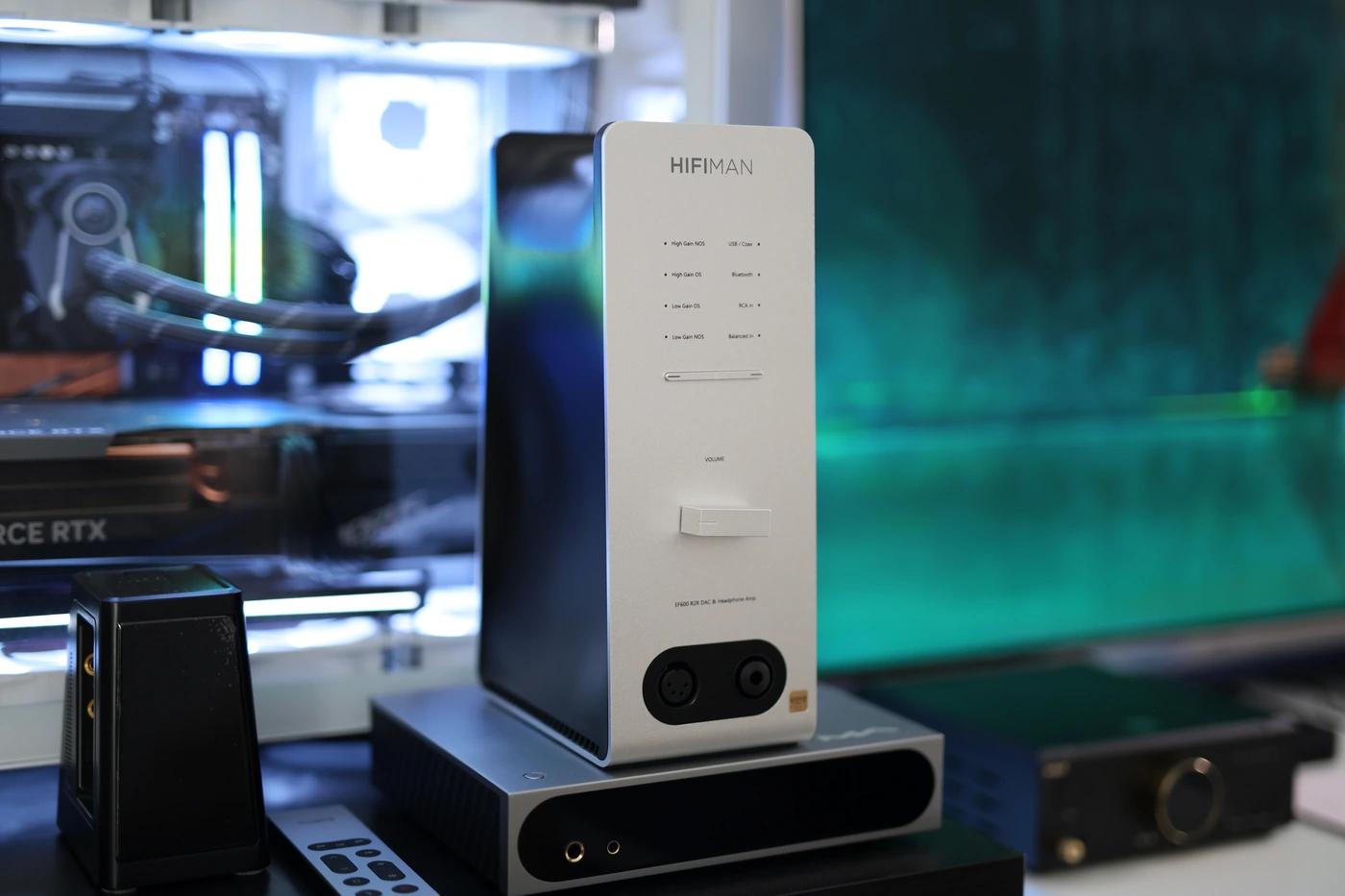
Introduction
HIFIMAN wanted to design something far more interesting with the new DAC/AMP series than what other companies have, so instead of using the same tech and off-the-shelf DAC chips, they decided to use an R2R DAC array with their custom Himalaya chips. This design has been seen before, but it is subject to controversy as a company needs to invest more in the R&D parts to make it truly good, than with Delta-Sigma DACs, but R2R tech is known to be able to provide a much more musical, smoother and more natural listening experience when implemented properly. The new EF600 is not the current flagship, and we’re actually looking forward to reviewing the new Serenade as well, to make a rank, but EF600 has the advantage of being one of the most versatile DACs to date for the inputs it has, and the headphone driving power as well. As an Amazon Influencer, I earn from qualifying purchases, and using the purchase links in my reviews helps me maintain this Website and Youtube Channel.
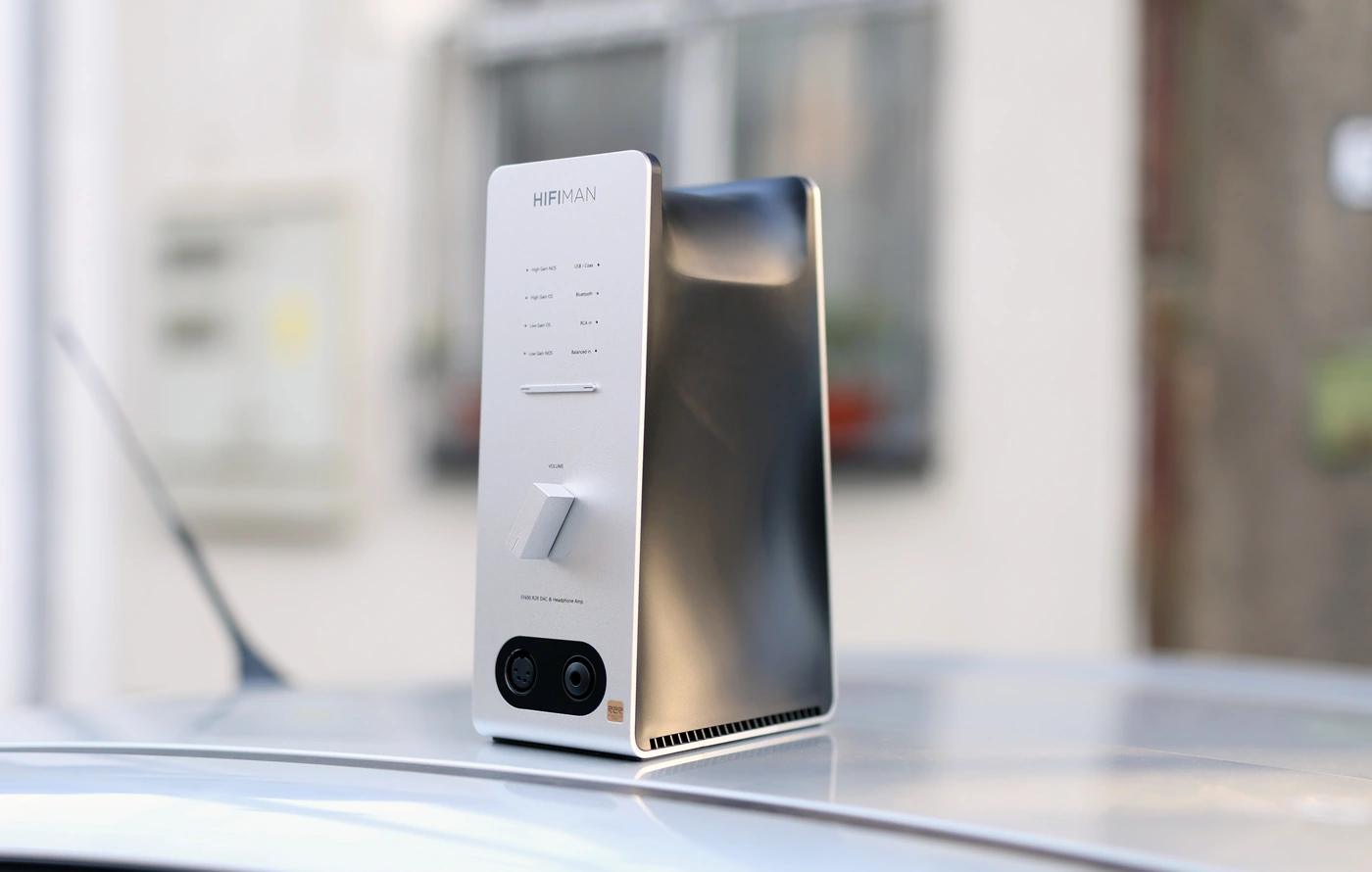
I’d like to thank HIFIMAN for providing the sample for this review, in exchange for my honest opinion. This review is a description of my personal experience.
Product Link
You can grab one from www.amazon.com here – https://amzn.to/48Osfce
If you’re in the UK, you can grab one from www.amazon.co.uk – https://amzn.to/3u85Ya7
And if you’re from Europe, you can grab one from www.amazon.de – https://amzn.to/3SvuAmy
Build Quality/Aesthetics
HIFIMAN EF600 part of a whole new concept of a Desktop DAC/AMP, the Tower. There are many reasons why you’d want a tower, including having more space on your desk, if you have a smaller display and you can have the EF600 next to the said display, and if you want to have a better cooling without fans, as in EF600, the Toroidal Transformer is at the bottom, and with heat naturally rising to the top, and it having vents, it cools off efficiently and passively. The only other device that I reviewed in the past which was similar in shape was the Smyth A16, but EF600 is heavier and has a considerably higher driving power.
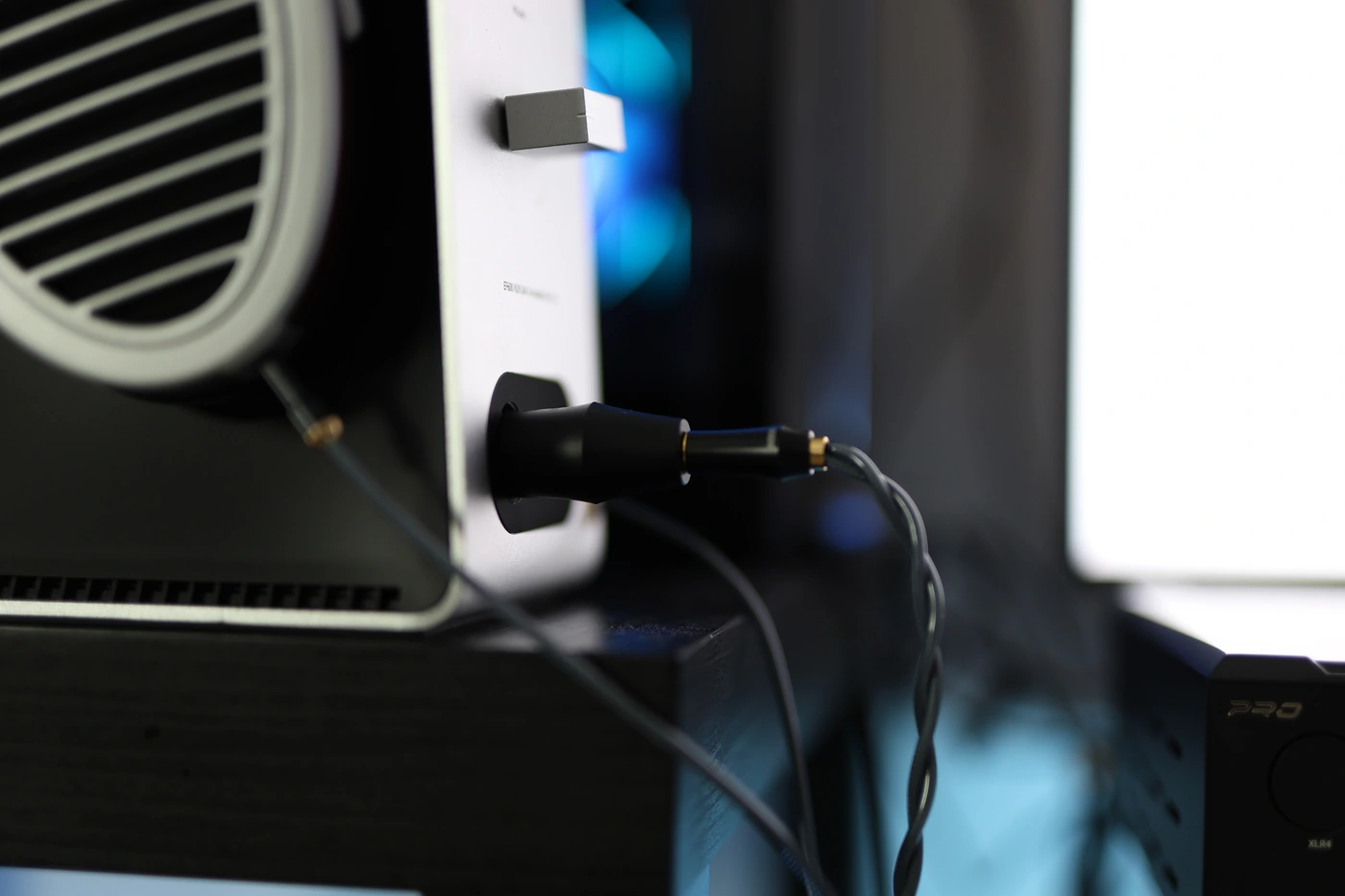
Starting with the internal build, we have a Fully Balanced Dual Mono architecture for the headphone amplifier. The DACs are Dual Himalaya PRO chips, with a whopping 118dB SNR and 131 dB Channel Separation. The headphone output power is insanely high, at 2×5.12W per channel for a 32 OHM impedance for the balanced headphone output, and 2 x 1.8W per Channel for a 32 OHM impedance for the single ended headphone output. The total THD comes out at an insanely low 0.0014%, for Line Out, at -8dB.
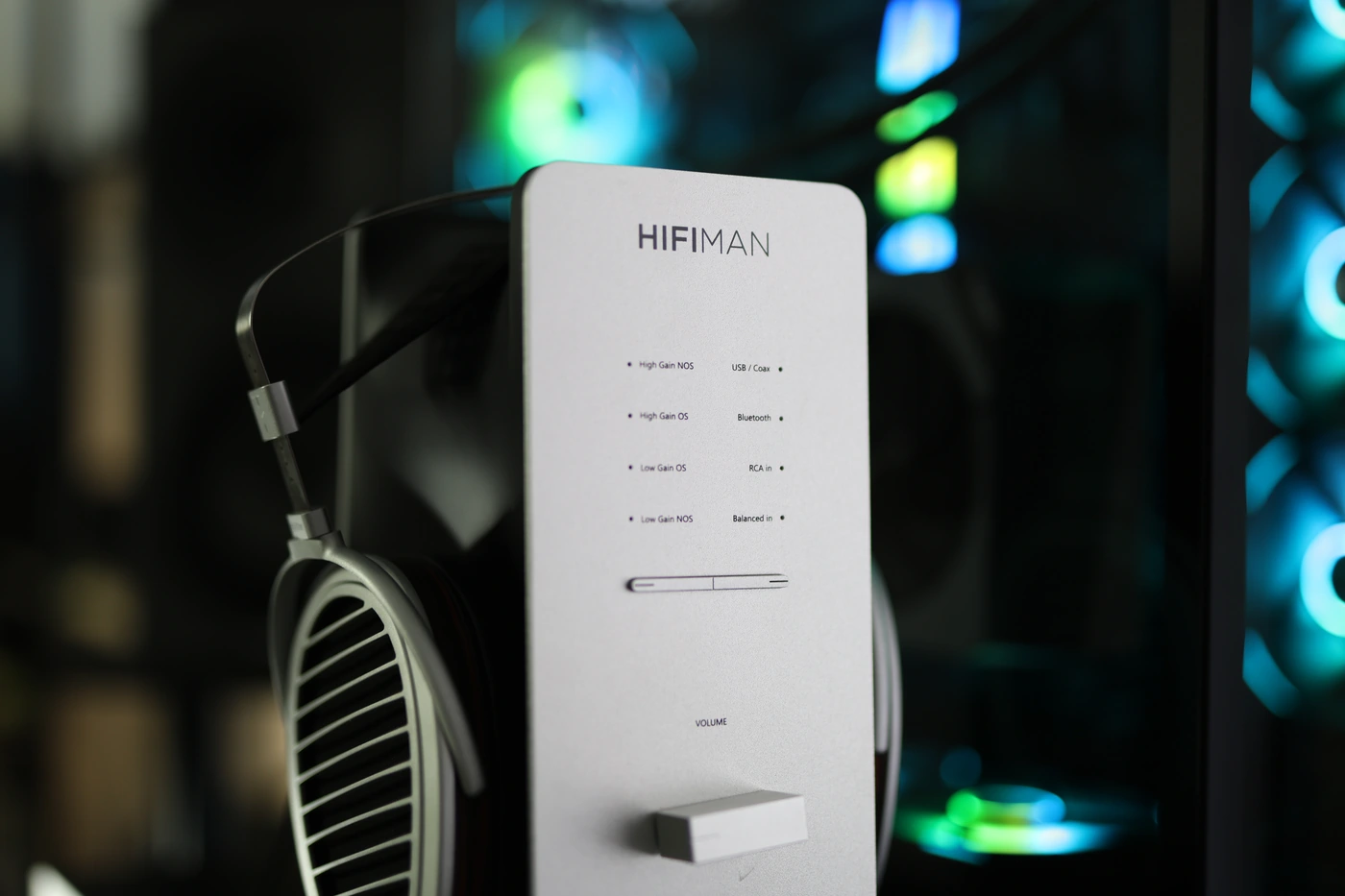
In terms of inputs, we have a USB Type-B and a USB Type-C USB input, both of which work really well. They cannot be connected at the same time, and you have to use either. There is no DAC delay, and everything plays in real time with no noticeable lag, so sound will play in real time with video content, or even games. The inputs also include a Coaxial input, Balanced XLR input, Single Ended RCA input, and even Bluetooth input. The main resolution for EF600 is 32 Bit / 192 kHz for PCM, and we have DSD up to DSD256. We also have Bluetooth support for LDAC, aptX, AAC and SBC, but the sound is generally more detailed from the USB inputs and the other digital inputs, the Bluetooth compression being audible, especially as the sound of the dac is very detailed.
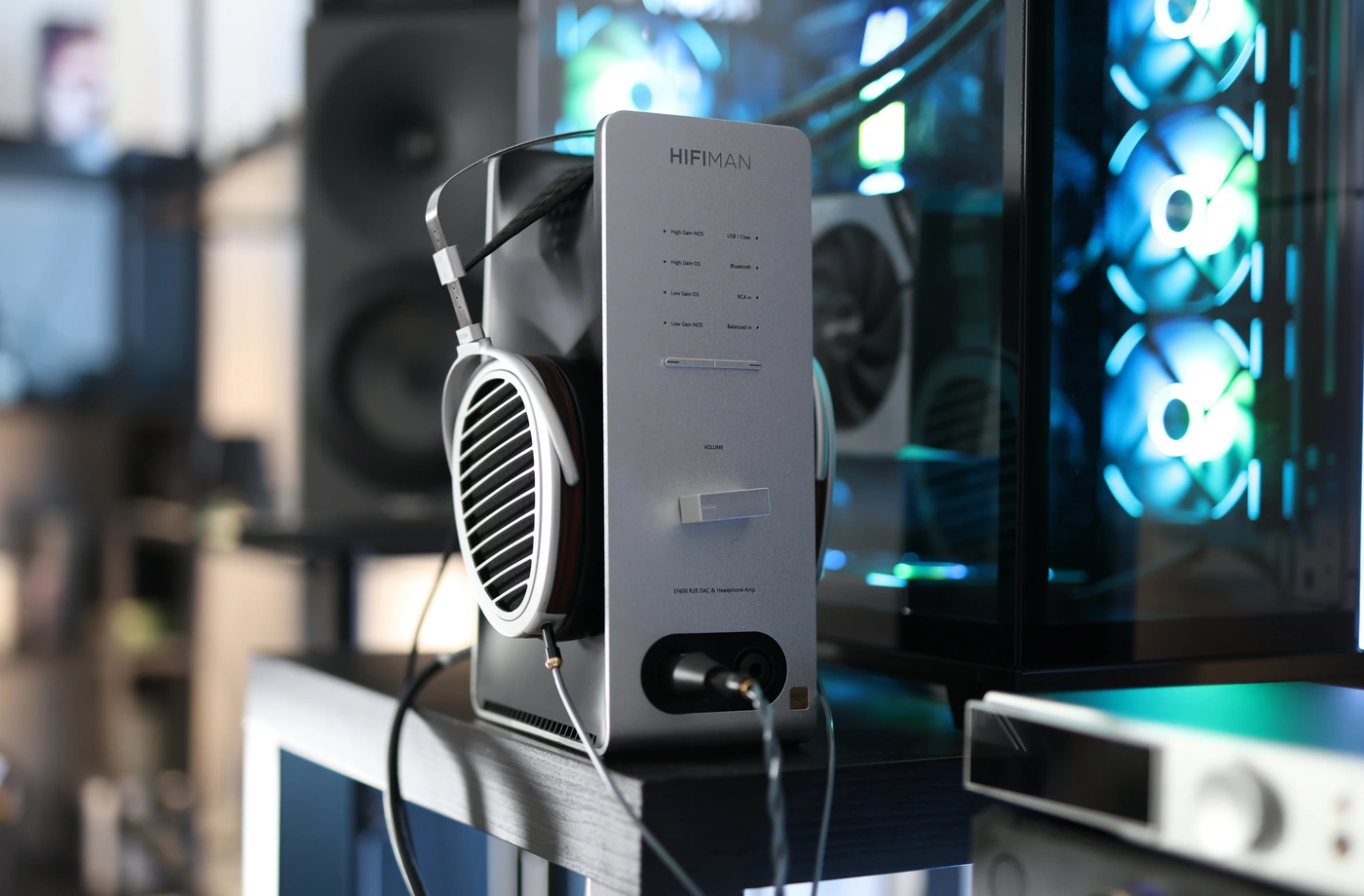
The Toroidal Transformer is a large OFC or Oxygen Free Copper wire wound Toroidal Transformer, and the whole idea of the EF600 is to be used as a headphone stand, having the front and back parts larger than the middle to allow you to place headphones on the center part.
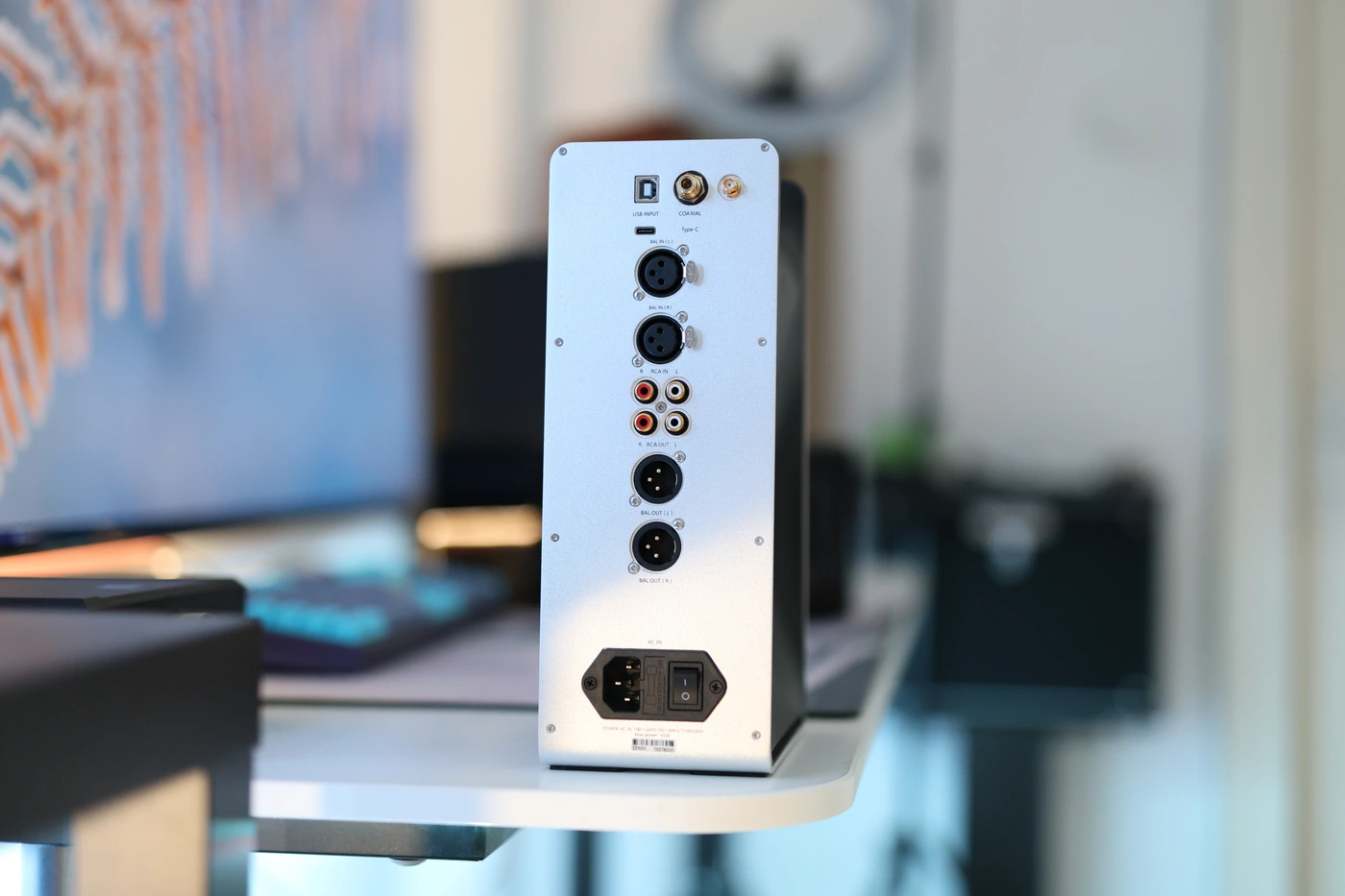
We have two Line Out options, one in RCA Single Ended format, and one in XLR Balanced 3-Pole format, but both of those work at full volume at all times, and they are not preamplifier outputs. EF600 is somewhat sensitive to noise, and if you are placing it next to a computer with a powerful graphic card, or next to a router, or if it is plugged in a wall outlet with a lot of other devices, you will hear a bit of background noise. That can be reduced by physically isolating EF600 from other devices with strong electromagnetic fields, and using a power cleaner / power conditioner such as Plixir Elite BAC 400. This is not an issue at all with the headphone output, and as a headphone amplifier, EF600 is very silent.
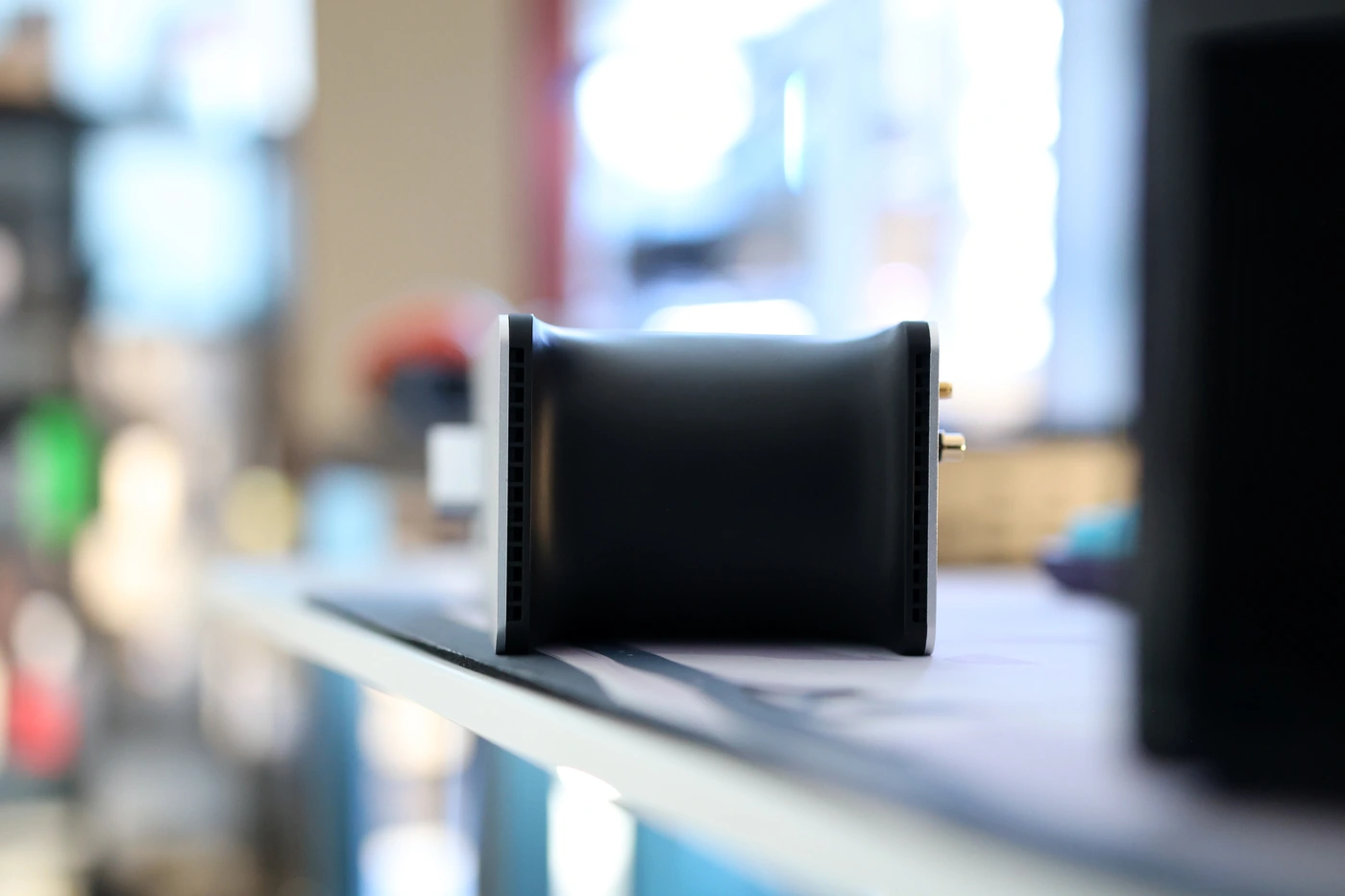
While I have not been able to find an exact headphone output impedance, EF600 is designed for large and hard to drive headphones, such as HIFIMAN HE1000SE, HIFIMAN Audivina, iBasso SR3, Sivga Luan, Sennheiser HD 660S2, Meze 109 PRO, Dan Clark Aeon 2 Noire, or Audeze LCD-5. It has more than plenty of power for all of those, and for many you may even want to engage the Low Gain mode, to get a more granular volume control. With High Gain, LCD-5 gets plenty loud at 12 o’clock already. With IEMs, there is very little volume control, and EF600 is not designed for IEMs, as even in low gain, they get super loud already at 9 o’clock.
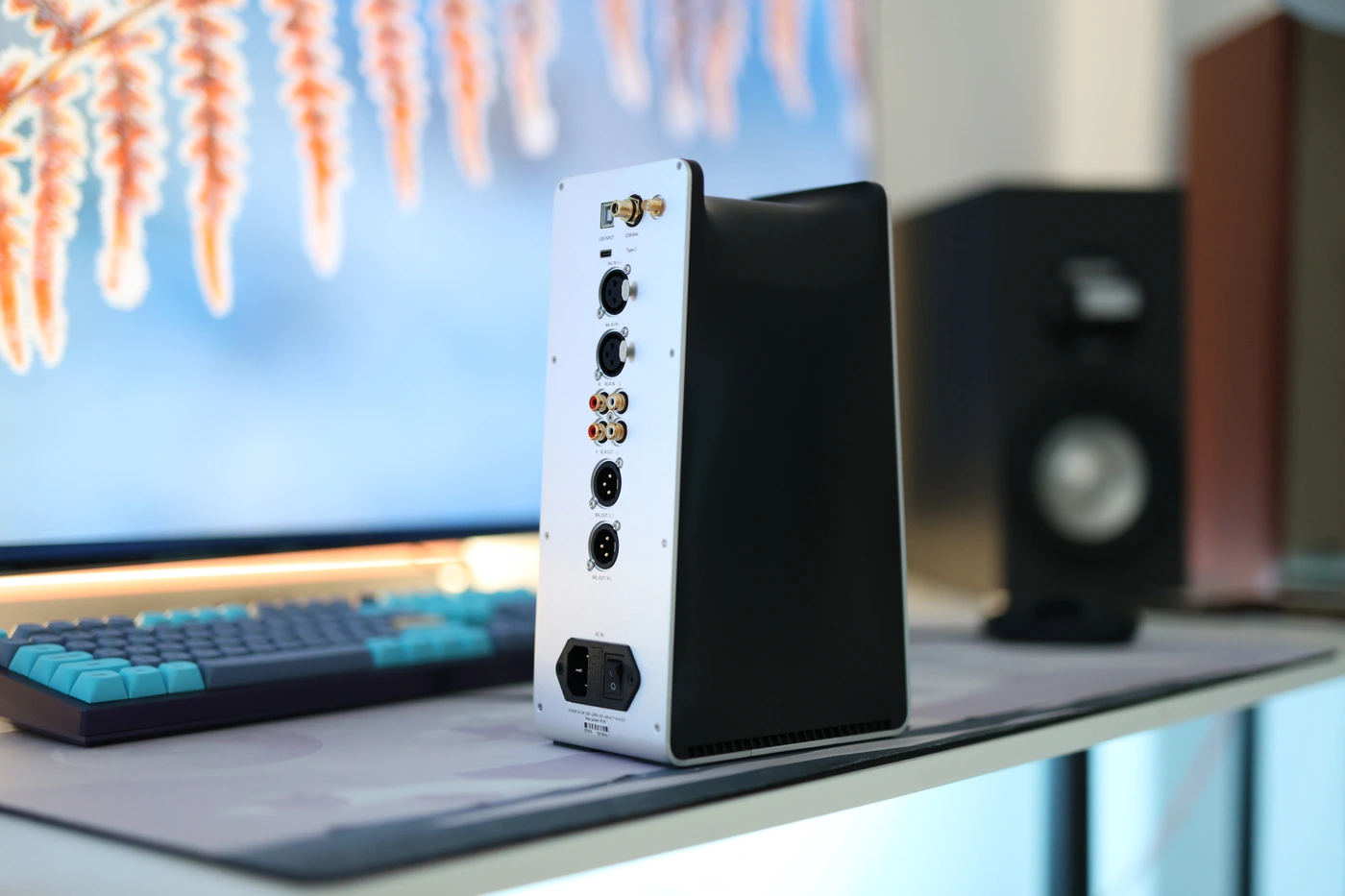
There are two modes, an OS or Over Sampled mode and a NOS Mode or Non Over Sampled mode. Those indicate whether a filter is applied over the DAC or not, and I personally found that the OS mode sounds better than NOS, the treble is brighter, sound is more vivid, and more aggressive. The NOS mode sounds softer, attack is softer, transients are softer, but this makes the music more agreeable, warmer and generally more laid back and relaxed. The differences between the two modes are not super high, and much smaller than they were with EF400, being nuance and finer tuning differences rather than a hugely different presentation.
The differences between NOS and OS modes can augmented by using aftermarket cables, and for example when listening to HIFIMAN He1000SE, I prefer the softer, warmer, more organic sound of NOS mode using LavriCables Master Silver, but I prefer the more dynamic and punchy sounding OS mode with the default cables and ddHIFI BC150B, both of which are softer, warmer sounding cables with a smoother treble. While one could argue that the whole point of purchasing an R2R DAC is to use it in NOS mode or filterless, as this is a huge part of their advantage, I think that it still has a unique and interesting sound even in OS mode, compared to a standard Delta-Sigma DAC, as we will be exploring in the Sound Quality part of the review.
The headphone outputs are two in number, and there is a Balanced XLR headphone output, for which I ever got a special LavriCables Master Silver cable, with an XLR plug, but you can always pair EF600 with basically any 4.4mm balanced headphone by using an affordable adapter that doesn’t affect the sound, like ddHIFI XLR44B. The other headphone output is single ended and 6.3mm in size. You can use both headphone outputs at the same time with no sonic degradation, and they work well this way too, but I generally found I did not need the feature.
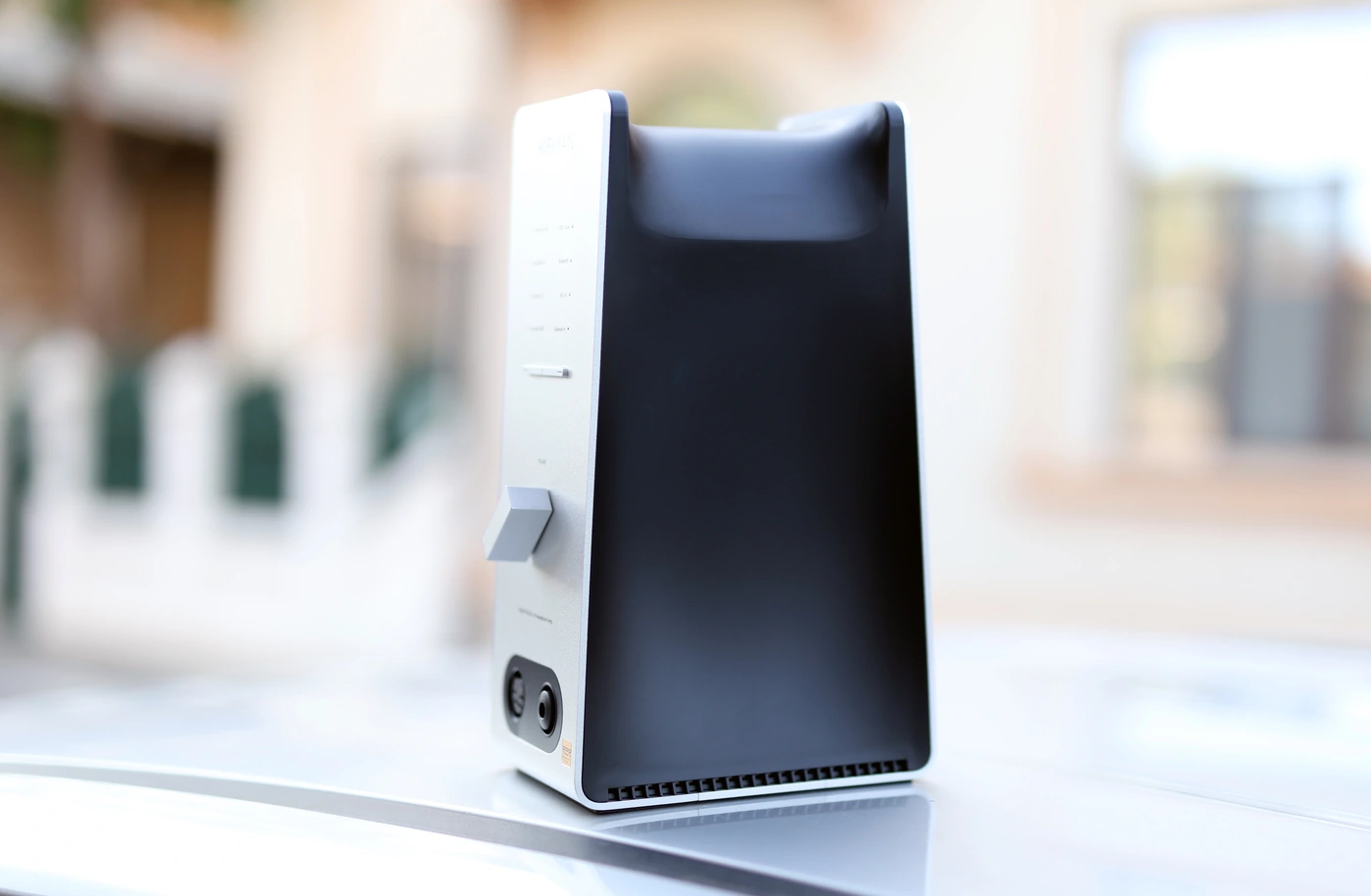
To test the EF600, I have paired it with a large selection of headphones, and also IEMs. I was not able to use it well with stereo systems, due to the DAC not having volume control, as my system is now revolving around Keces S300+ which also does not have volume control. This being said, the list of headphones I have tested with EF600 includes HIFIMAN He1000SE, HIFIMAn Audivina, HIFIMAn Arya Organic, iBasso SR3, Audeze LCD-5, Audeze LCD-XC, Audeze MM-500, Sivga Peacock, Sendy Audio Apollo, Sennheiser HD 660S2, and Avantone PRO Planar. For the IEM list, I’ve used Fir Audio VxV, HIFIMAN Svanar, iBasso IT05, Soundz Avant, and Sennheiser Ie900. If you’re wondering how did I even have the time to do all of this testing, I’ve used EF600 as a benchmark DAC for a few months now, as I had a huge backlog of reviews to catch up with, so for many of the newer reviews I already had it on my desk, waiting to be employed in a system.
Sound Quality
When using HIFIMAN EF600 to drive large headphones, you always get enough power, enough impact and enough bass depth, but where it excels is in control. It has the authority and low distortion to actually properly drive all of the headphones I tested with it, it is agile, yet organic, punchy yet controlled. The sound tuning can be either brighter and more aggressive, with a really good resolution, and strong, expressive traisnets in the OS mode, or you can turn to the NOS mode for a smoother, organic, laid back, relaxed but still airy and clean presentation. The whole sound is exceptionally well defined and well rounded, with EF600 having everything that most DAC/AMPs below a couple grand USD lack, which is emotion and expressivity. I called FiiO K9 PRO really flat, and that stands true, the sound of K9 PRO ESS is ideal for a studio, where you want no coloration, but EF600 manages to have an addictive character, a bit of extra warmth in the midrange, a bit of extra brightness in the treble, without becoming too colored or losing control.
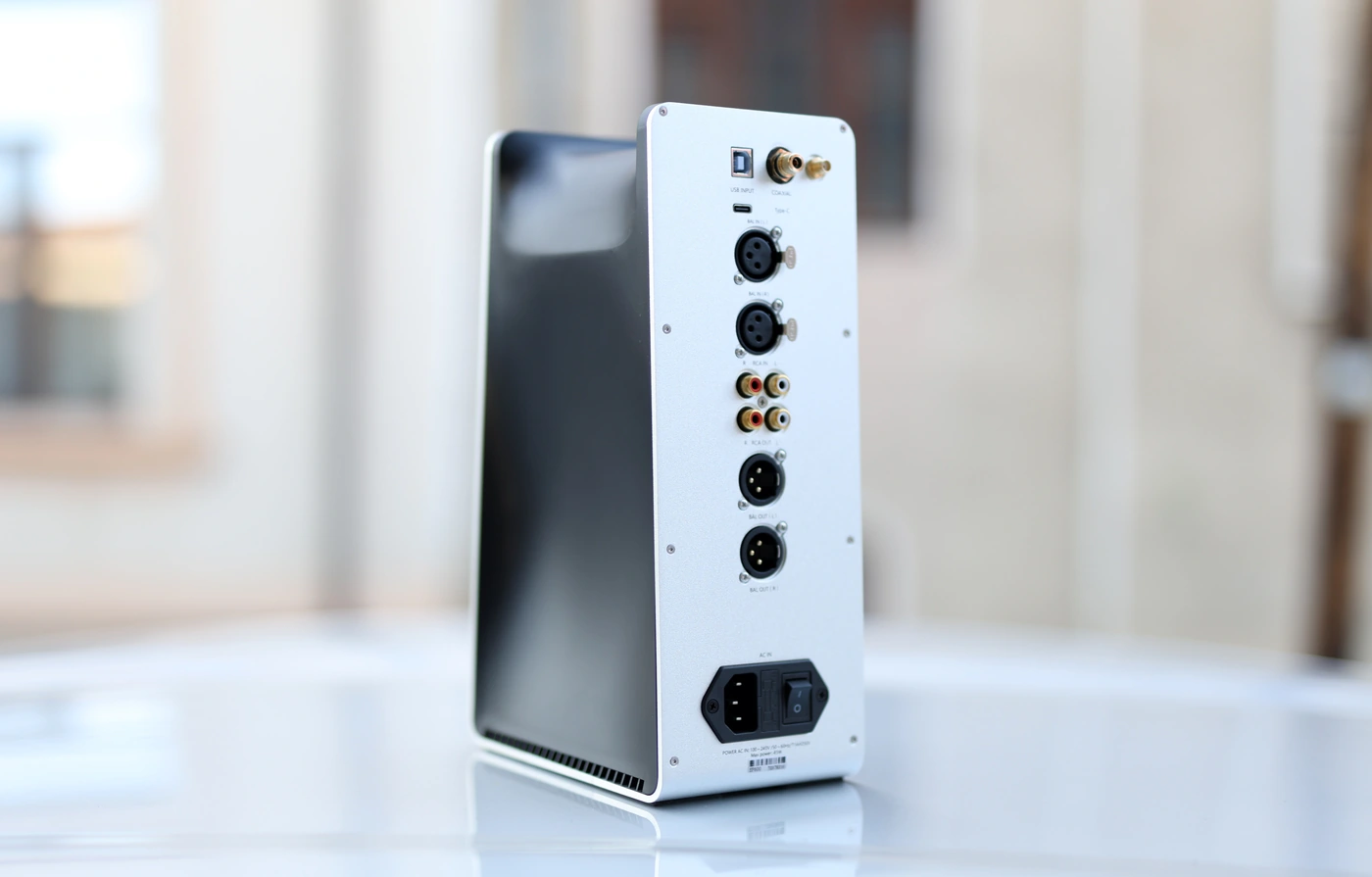
The driving factor is extreme, and even at low gain it can drive most headphones on the market, with HE1000SE being driven starting with 9 o’clock relatively low in high gain, and other more sensitive headphones requiring low gain. While with most devices you need high gain for the best sonic experience, EF600 works well in low gain too, as it doesn’t have a reduced resolution, dynamic range or any drawback when being used in low gain. Most of the testing has been done in NOS mode, where EF600 sounds warmer, smoother and more organic, but you can always apply the OS or oversampling filter for a more aggressive sound.
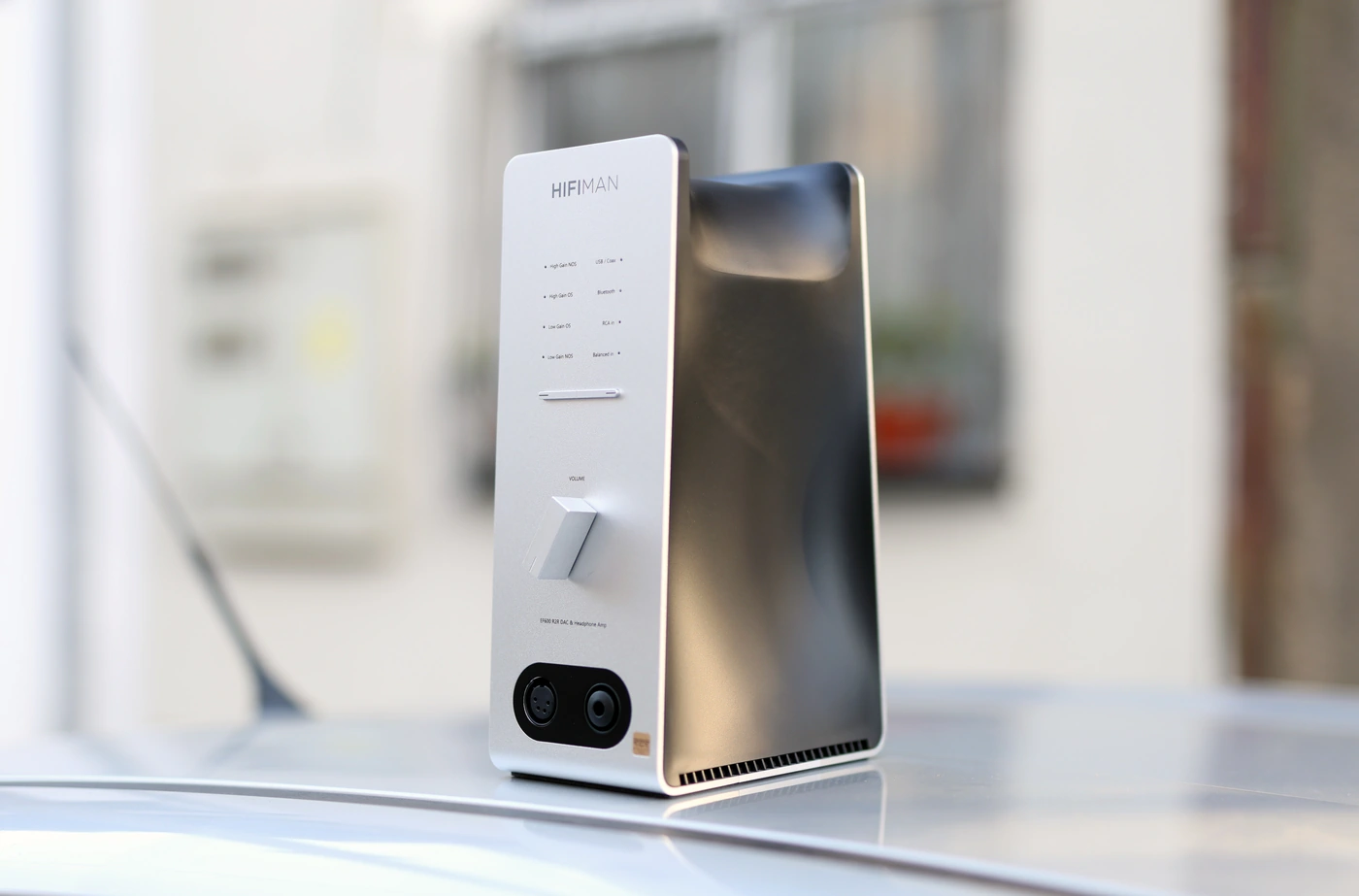
Starting with the bass, we have a deep, clean and rounded bass, with a slight hint of extra warmth in the mid bass, a natural decay to each musical note, and a good extension in the sub bass. EF600 handles both high impedance and low impedance headphones really well, with no roll off for either, giving a punchy, deep presentation to both. The bass is generally on the softer and more laid back side in the NOS mode, but it becomes tighter, more aggressive and more punchy, although also slightly lower in quantity in the OS mode. The character of the bass becomes faster if you’re relying on the OS mode, but the slower decay gives instruments fullness and more presence, weight and depth. The bass extends really nicely in the sub lows, and I found that only a few DAC/AMPs can fully drive HE1000SE properly, giving them a super heavy but controlled presentation, good blows for metal music, but still no distortions or loose bass for Jazz and bass-heavy electronic music.
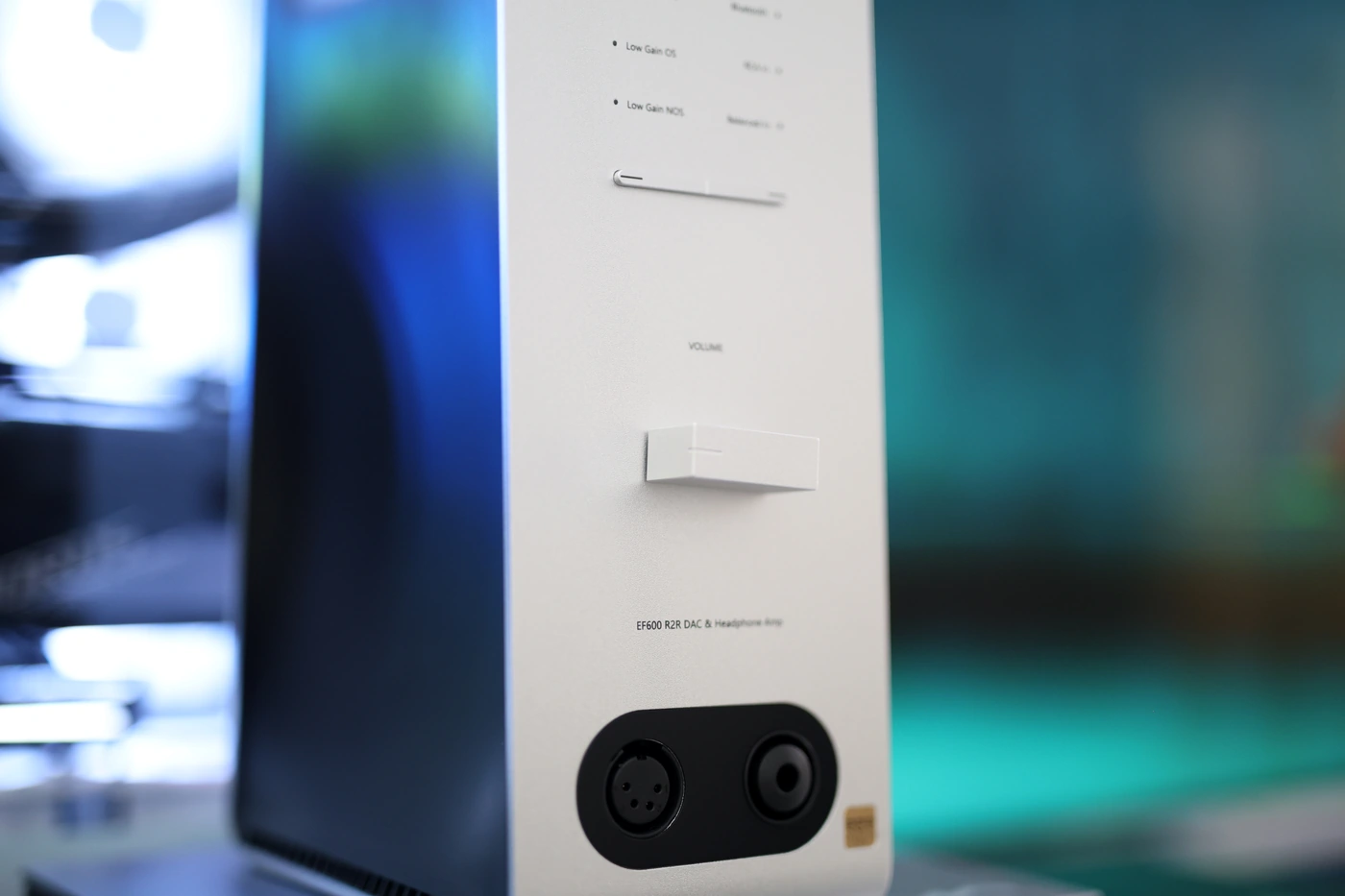
The midrange is organic-sounding, smooth, with natural sounding, pleasing transients that make a lot of sense for all music styles. The soundstage is both wide and deep, holographic, with excellent instrument separation. The detail level is plenty, and EF600 presents finer intricacies in music with ease, showing and revealing every little bit of detail available in music. Especially finer nuances in the soundstage are obvious in rock, metal, shoegaze, and even EDM and J-Pop music, EF600 makes everything wide and holographic, it projects music on the edges of the soundstage around the listener, and gives voices enough space to breathe, making music super exciting to listen to. Both male voices and female voices are pleasing, and EF600 doesn’t emphasize one over the other, but it makes both sound natural and exciting. If there is a proper word to describe its sound, that is live, EF600 sounds very much like a live concert, it brings in all the emotion, energy and punchiness in all frequencies, all whilst keeping nuance and detail integer. The dynamic range is increased greatly, and this will make you dial in more volume, bringing everything to shine with more contrast and better resolution.
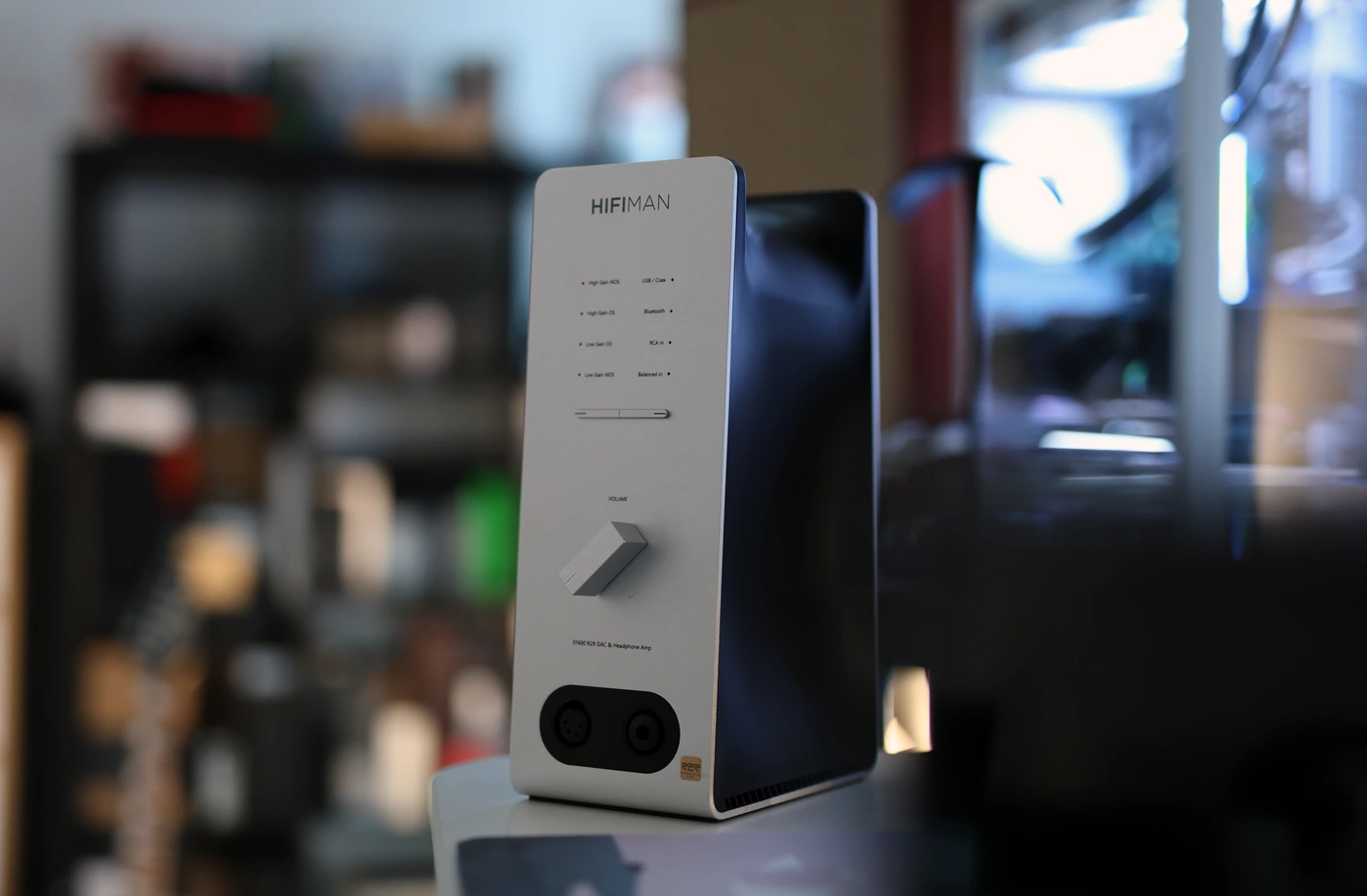
HIFIMAN always knows how to paint a colorful, bright and airy treble, EF600 being a perfect pairing for HE1000SE, and allowing them to either shine at their brightest, if using the OS or Oversampled mode, or damping the treble and relaxing their sound a bit, using the NOS mode, leading to softer transients, and more bass relative to the treble. EF600 has the advantage of showing a finer treble detail and a more refined listening experience, and most of the competition loses control when driving a headphone like HE1000SE, and EF600 is a rare opportunity to hear them amped properly at such an entry-level price point. EF600 is basically a magical source for HE1000SE, but also for HIFIMAN Audivina, and even Arya Organic, and its bright, sharp and detailed treble is one to always love and fall for. The best part with the EF600 is how crisp its treble can be, even at super loud volumes, but also how refined it sounds. All in all, if you’re looking for a DAC AMP to bring the concert into your home, EF600 does just that and has the inner power and vein to never get you tired or bored.
Comparisons
HIFIMAN EF600 vs Matrix Mini-i PRO 4 (799 USD vs 959 USD) – The first comparison we’re drawing today is not necessarily a fair one, and that’s because although Mini-i PRO 4 costs more, it goes for a more versatile device, having a Preamplifier function, and a wider selection of digital inputs, including being a streamer, so more of its cost goes to this part, while EF600 focuses all cost to the audio part of the device. The outputs of Mini-i PRO 6 include a 4.4mm balanced output, and a 6.3mm SE output, while EF600 goes for either XLR for balanced or 6.3mm for SE outputs. The whole sound and design of Mini-i PRO 4 is made for both IEMs and headphones, with more focus on IEMS, having a lower noise floor and more volume control, while EF600 is designed far more around a higher driving power, more punchiness in the sound, better resolution, clarity and it ends up being a more vivid, more realistic sounding DAC AMP. The biggest difference is that Mini-i PRO 4 sounds smoother, warmer, thicker, while EF600 is more neutral, cleaner, more detailed, wider, with better instrument separation and a more holographic presentation. Both are good, and I would recommend Mini-i PRO 4 if you need the features it has, or if you need to drive IEMs too, but if you have to drive headphones, EF600 is a much better deal, with more punchiness, better depth, and more resolution.
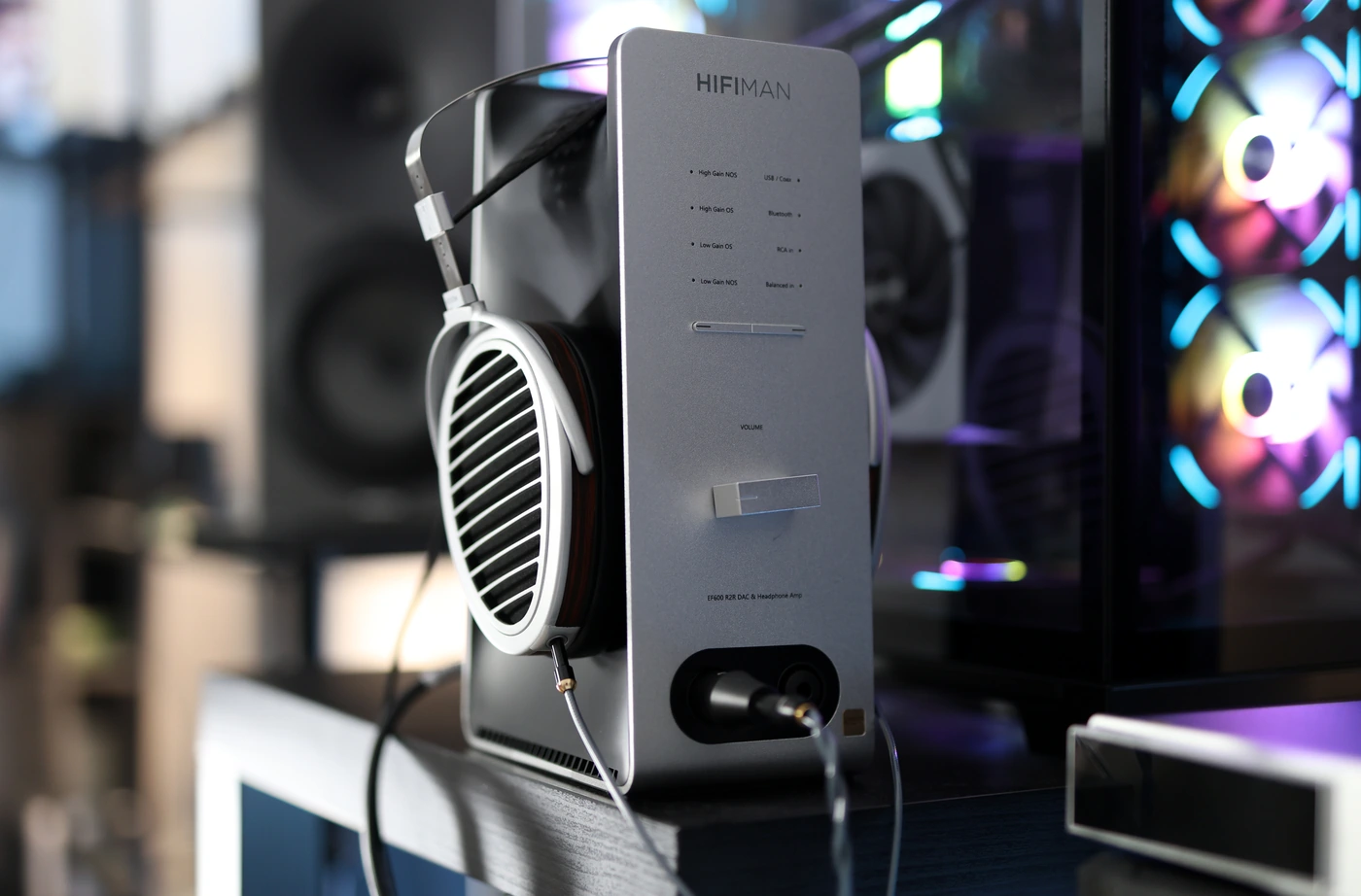
HIFIMAN EF600 vs HIFIMAN EF400 (799 USD vs 599 USD) – Although I’ve been a huge fan of the EF400 for a long time, HIFIMAN surely delivers a superior experience with their EF600 for large and hard to drive headphones. The one thing to consider here is that if you have a varied collection of both IEMs and Headphones, EF400 has considerably more volume control, and a bit less background noise for sensitive IEMS, while EF600 has considerably more driving power and a higher dynamic range for hard to drive headphones, being better at driving them. The overall resolution of EF600 is quite a big higher, the dynamics are improved, the soundstage is wider, deeper and instrument separation is better, and the whole sound is simply more stunning and accurate if you want to hear a live experience. The upper midrange has more color and contrast, while the lower midrange has better volume, and the sub bass hits deeper and harder for EF600, which sounds more vivid and realistic. The texture speed and representation is similar, and both have an R2R DAC as well as OS and NOS modes, but while EF400 opens up a larger world for both IEMs and Headphones, EF600 is superior in every technical aspect, musicality and as a device, for harder to drive headphones.
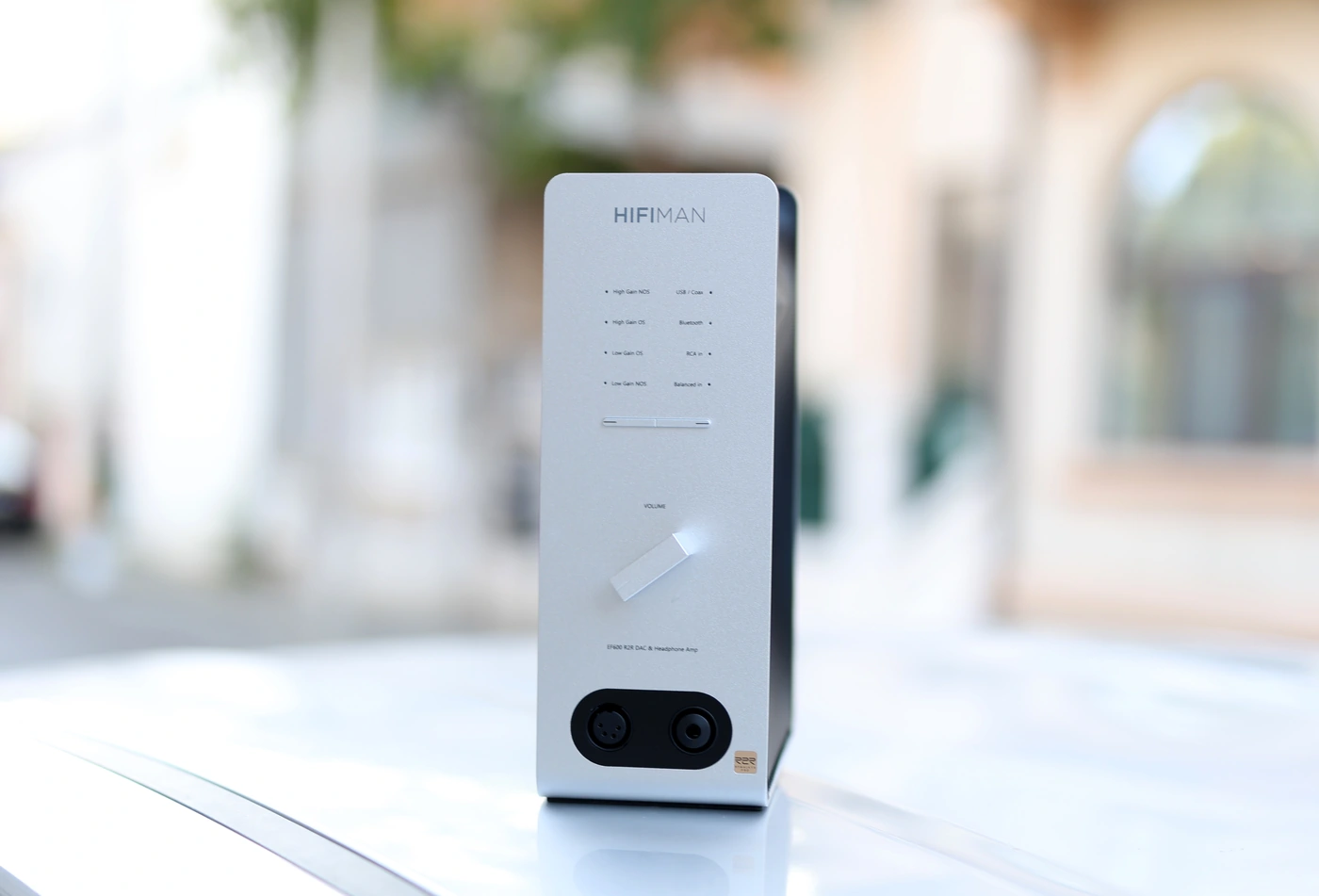
HIFIMAN EF600 vs FiiO K9 PRO ESS (799 USD vs 849 USD) – The design is solid for both, but K9 PRO ESS is a bit tall for my desk, so I often find myself using it on a pedestal next to the desk, so that it doesn’t come between my monitor and me. The funny thing here is that I find the EF600 placed on the same pedestal, as it is very tall, but I love having a headphone placed on the EF600, it is kinda like having it ready to go. Both AMPs have a solid number of outputs, but EF600 has considerably more driving power, and while both get warm during usage, FiiO K9 PRO ESS gets super hot during usage, while EF600 only gets warm, and even then it gets modestly warm. While both are great for all music styles, EF600 is more dynamic over both the line out and the headphone output, it sounds wider, more holographic, more punchy, and more detailed. The R2R DAC sounds smoother and more organic in the midrange, all while having a warmer bass and a more precise treble, while K9 PRO ESS sounds flatter and less colored, being what I would consider a more accurate studio DAC / AMP. Both EF600 and K9 PRO ESS are excellent options for the music lover, K9 PRO ESS can drive IEMs too and it has the convenience of volume control for the DAC Output (if you’re driving a larger system), and it also has more headphone outputs, including the common 4.4mm Balanced headphone output, but the sound of EF600 is more versatile, and especially if you have hard to drive headphones, including planar magnetic headphones, it has more punch, a lower reaching bass, more treble sparkle, a more holographic sound, and a higher resolution in the midrange. Overall, it is a better choice and a better deal for hard to drive headphones, where the humongous driving power can totally be felt.
HIFIMAN EF600 vs Aune S9c PRO (799 USD vs 699 USD) – Starting with the design, both S9C PRO and EF600 are made well, but EF600 can double as a headphone stand, while S9C has the traditional desktop unit design. Both get warm during usage, but EF600 stays considerably cooler, while S9C PRO gets considerably warmer. The maximum driving power is higher on EF600, it can drive headphones like HIFIMAN He1000SE more easily, with better dynamics, a more punchy sound, and better resolution / details. Both DAC/AMPs can work as DACs for a stereo system, but S9C PRO has volume control and a lower background noise, while EF600 is mainly best used to drive headphones from one of its headphone outputs. S9C PRO has three headphone outputs and it includes the 4.4mm balanced headphone output, while EF600 only has XLR Balanced and large 6.3 SE outputs, so it will need a ddHIFI adapter to work properly. The sound is actually quite different, and EF600 sounds more refined, more detailed, and considerably more dynamic, with the OS and NOS modes affecting the sound quite a bit. Regardless of the configuration, Aune s9C PRO always sounds smoother in the treble, with less treble presence and energy, warmer and fuller in the bass, but flatter in the dynamics. While both are good with the soundstage, EF600 is more holographic, expanding more in the width of the sound, although the depth is very similar. I prefer EF600 for hard to drive headphones and for large headphones in general, while S9C PRO is a better choice for IEMs, where EF600 has a bit too much power.
Value and Conclusion
There are many High-End DAC/AMPs and desktop units out there, but EF600 stands out strong and tall in the market today, it has exceptional price / performance ratio, with the driving power for headphones, decoding ability of the DAC and overall design being key elements of why it is such a great deal. You may need a preamplifier to use it for a desktop setup, but it will surely make your sound magical, and that’s priceless.
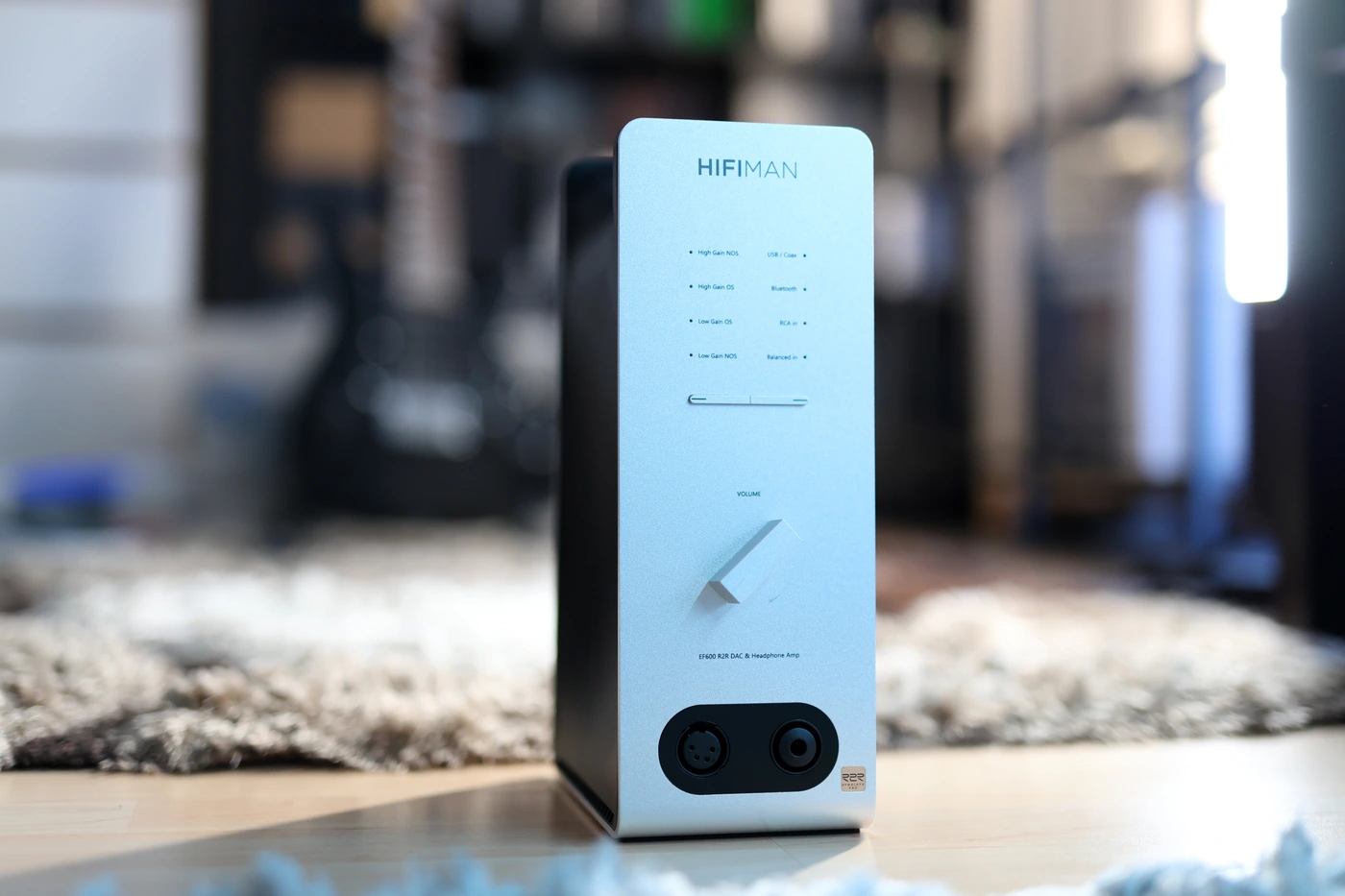
Before the end of today’s review, I want to add the HIFIMAN EF600 DAC / Headphone AMP to the Audiophile-Heaven Hall Of Fame, as one of the most dynamic, punchy, and detailed sounding DAC AMPs for its price range.
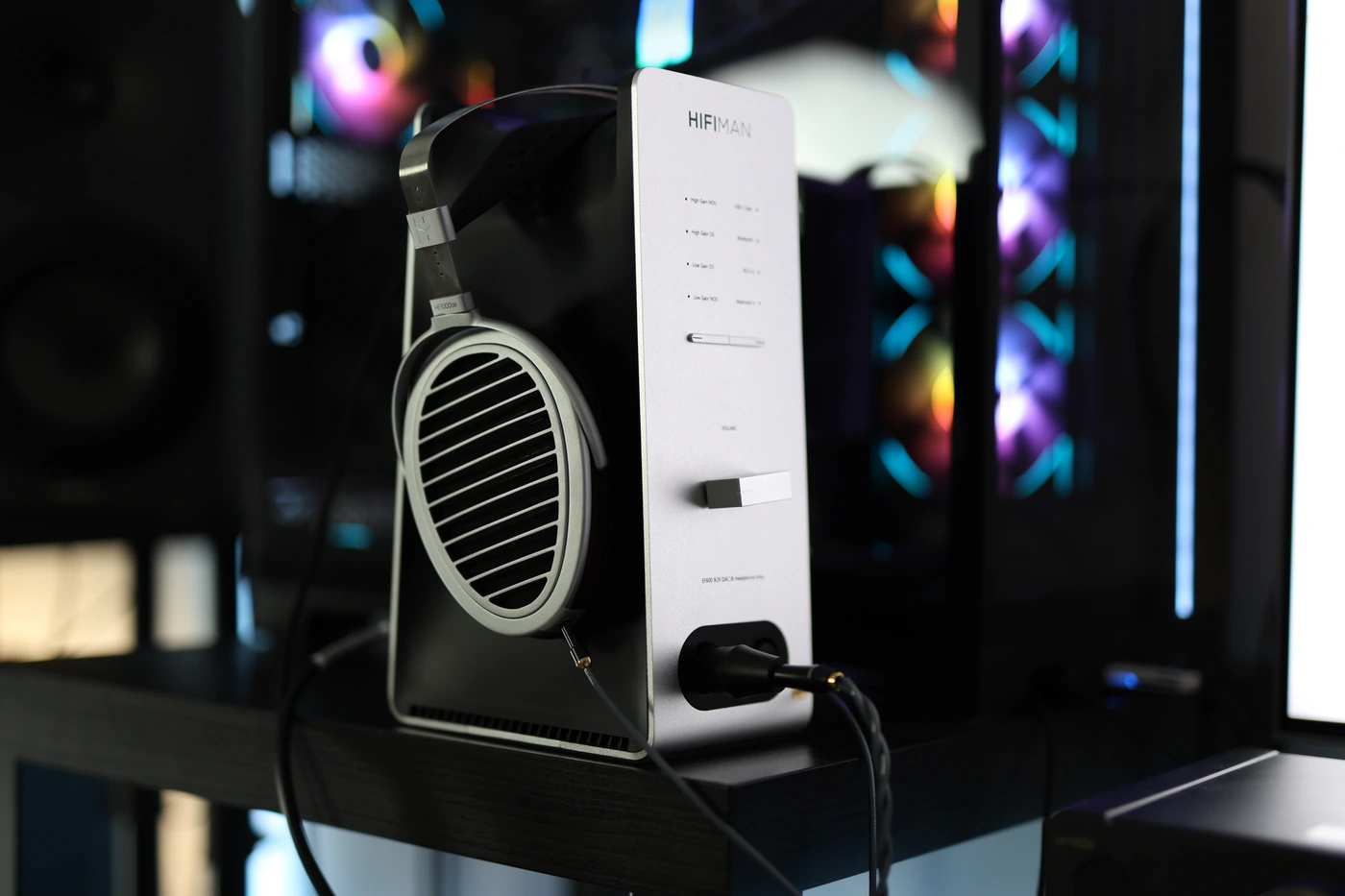
At the end of today’s review, I want to name a few of the features that EF600 manages to achieve, and those include extraordinary driving power, exceptional build quality, and the super resolution it manages to have while staying organic, clean and natural in the midrange. It surely is a fully recommended purchase, and one of the best DAC/AMPs you could ask for, especially if you have a pair of HIFIMAN Headphones and want to give them the best sound they can have.
Product Link
You can grab one from www.amazon.com here – https://amzn.to/48Osfce
If you’re in the UK, you can grab one from www.amazon.co.uk – https://amzn.to/3u85Ya7
And if you’re from Europe, you can grab one from www.amazon.de – https://amzn.to/3SvuAmy
--- Please remember to stay safe, and always have fun while listening to music!---
- If you have a dime to spare, please donate, and help us! It would make the day brighter for me and my wife-
Full Playlist used for this review
We listened to more songs than those named in this playlist, but those are excellent for identifying a sonic signature. I recommend trying most of the songs from this playlist, especially if you’re searching for new music! The playlists are different for Spotify, Tidal and Youtube, and based on the songs I enjoy and are available on each!
https://www.youtube.com/playlist?list=PL_cjBXGmwSHSdGcwuc_bKbBDGHL4QvYBu
https://open.spotify.com/playlist/5J3oloz8Riy9LxEGenOjQ0?si=979ba4f082414be7
https://tidal.com/browse/playlist/330fd544-8e5b-4839-bd35-676b2edbb3d5
--- Contact Us ---






How does it sound against Ross technics rt5000?
EF600 has 5.12 w on balance, S9C has 5 w on balance. Why do you think that EF600 is preferable for hard to drive headphones? Thanks.
It all rounds up to the tuning, EF600 is a bit punchier and delivers a bit more strength to sound, which is usually helpful with hard to drive headphones that typically sound lean and laid back. The technical performance is very similar